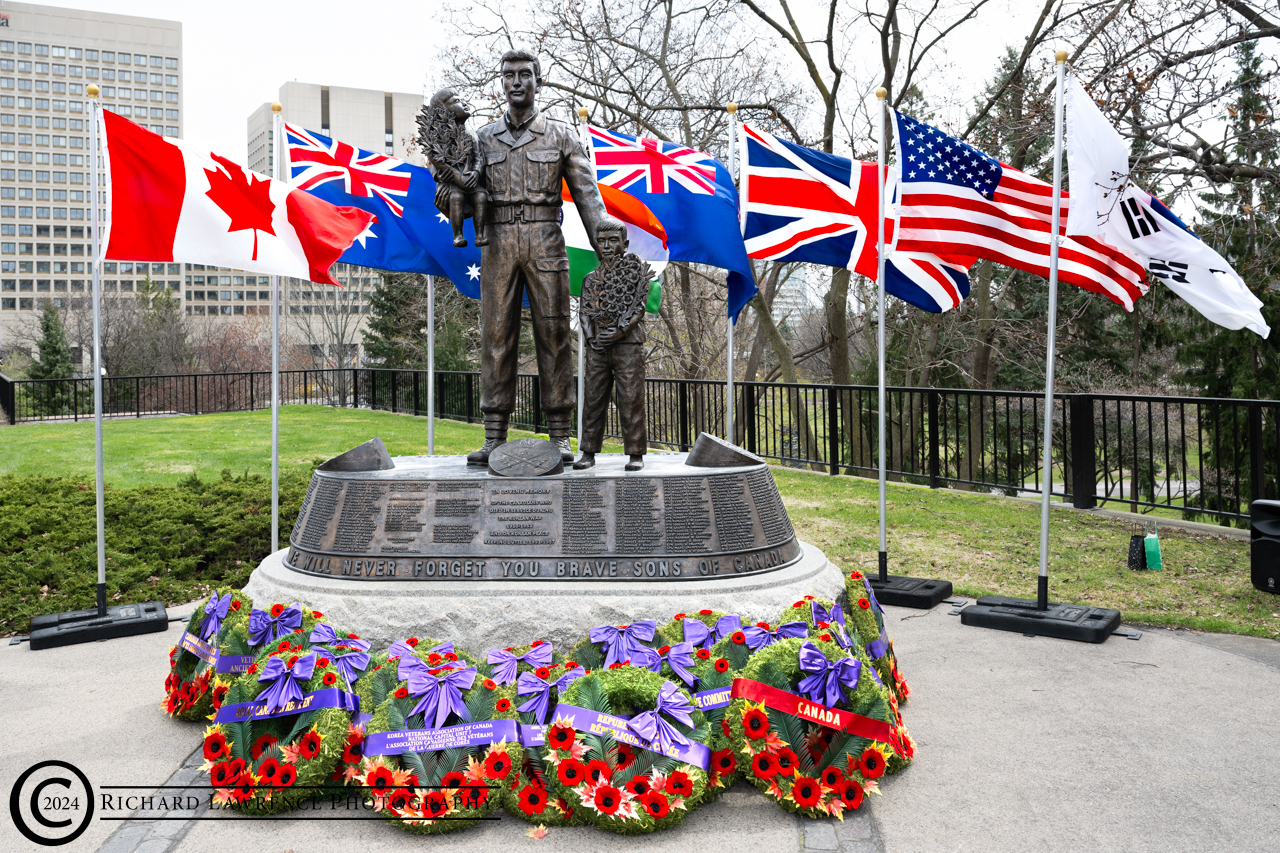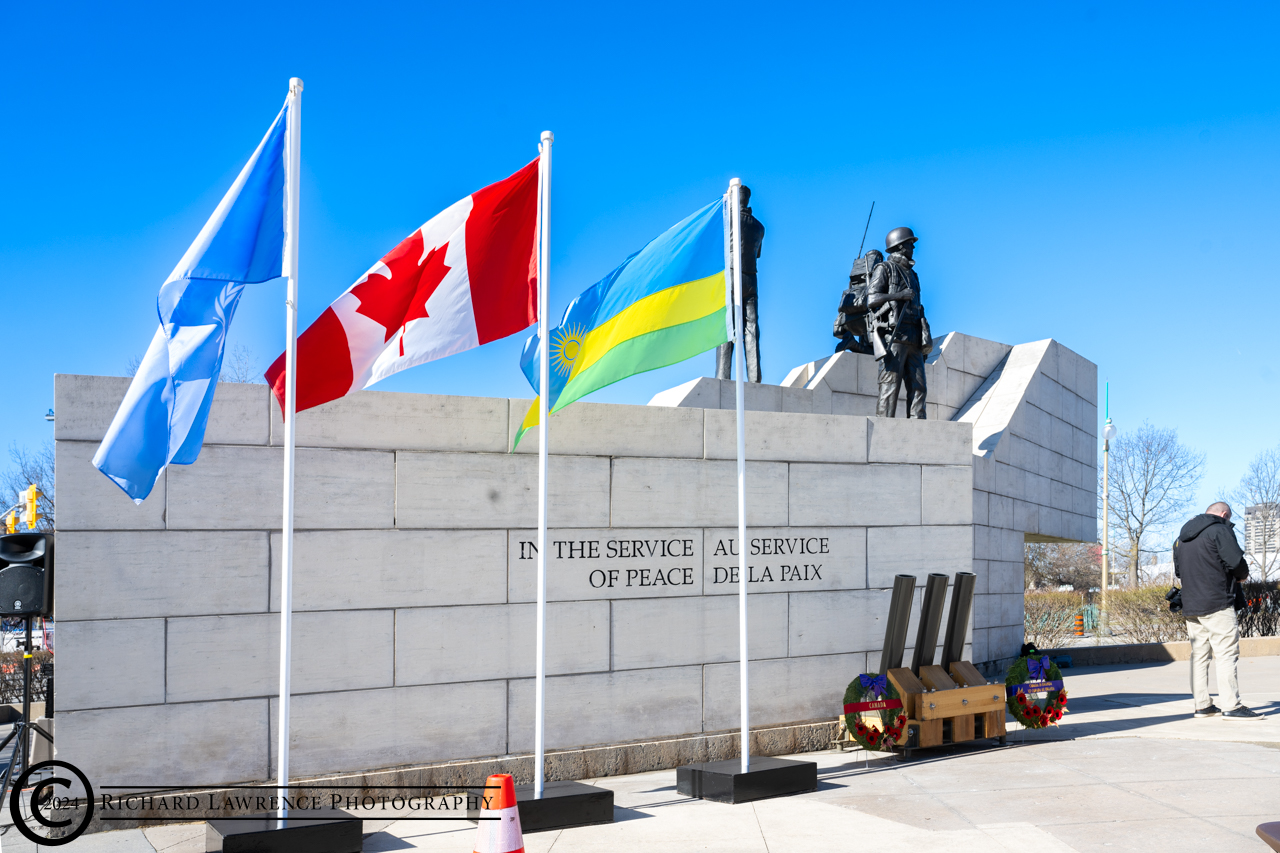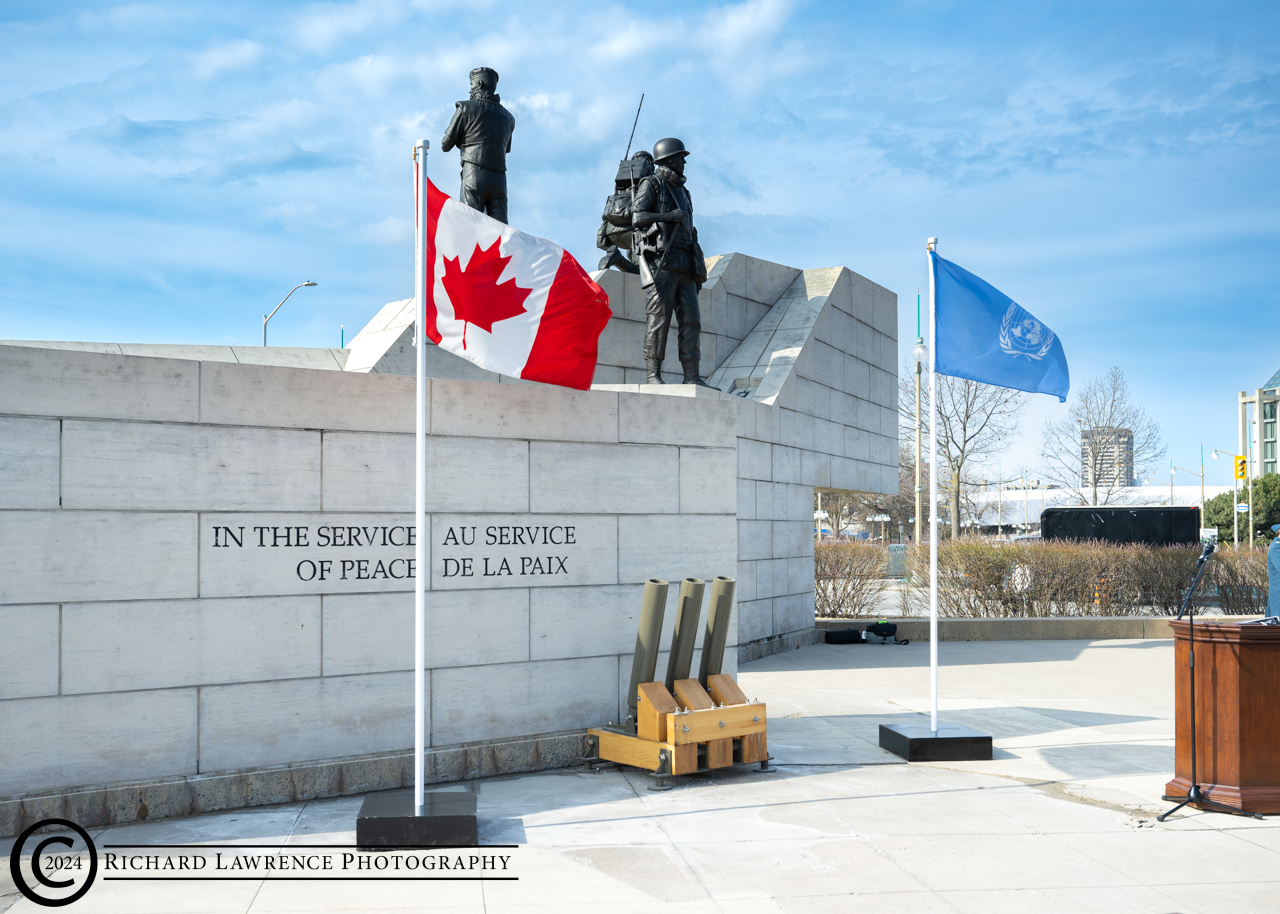Today (14th Feb, 2019) the Canadian War Museum opened a new exhibit entitled “The Wounded” in which it displayed 18 black-and-white portraits of Canadian men and women who served and were wounded in Afghanistan, taken by photojournalist Stephen J. Thorne. Sixteen of the portraits were originally featured in a series by Legion Magazine in 2017 while two are new. This exhibit, which is presented in conjunction with Legion Magazine, illustrates stories of loss, but more importantly, the will and determination to stare adversity in the face and to rise above it. At the opening, 10 of the 18 soldiers portrayed were present in the audience and talked to the guests about their experiences before, during, and after their woundings.
Mr. Thorne completed three assignments covering Canadians in Afghanistan from 2002 – 2004 and noticed that press coverage for the war dead was extensive but that the wounded were rarely mentioned. And when they were, they were referred to as “injured” – a vague term at best. In 2016 he decided to photograph and interview these dedicated, courageous soldiers. They didn’t necessarily want the attention but co-operated and collaborated out of an ongoing sense of duty and public service.
Mr. Thorne took this series of photographs using very low light, short lighting, and a lot of shadow, finally deciding to print them in black-and-white as he felt doing so made the images much stronger
for the viewer. While Mr. Thorne’s work is exceptional in its posing, lighting, and presentation, the deeper story is of the subjects of the photographs. Each one of these images tells of tragedy and show people overcoming adversity. And make no mistake, all of these stories affect not just the injured but those closest to them as well for while the world is turned upside down for the soldier, it is every bit the same for their partners.
Particularly inspiring is the story of MCpl. Mike Trauner and his wife Leah Cuffe. In December 2008 and IED detonated underneath Mike and took both legs and damaged his hands and arms. The damage was so bad that he was not expected to live (in fact died once on the battlefield and once in surgery). He was in Landstuhl, Germany, for 11 days and was then repatriated to the Civic Hospital where he continued to recover and then undertake rehab for the next 14 months. He has been through 18 surgeries and 14 different prosthetics.
Mike and Leah persevered and Mike decided that he was never going to wallow in pity. He has been asked by many if he ever thought about “Why me?” and his response has always been, “Why not me? If it hadn’t been me, then it would have been someone else so why dwell on it.”
Today he still moves around in a wheelchair but is able to use his prosthetic legs to walk as well. He stated that he is able to move around for hours if he is in his sports gear but in a tie and jacket with dress shoes he tires much more quickly and standing becomes an issue. I personally wouldn’t have thought that shoes would make a difference in how the prosthetic legs perform but he assured me that the dress shoes very much limit his ability to use the prosthetic legs. When asked about pain, he stated that there is always pain, every day, every minute. It’s all about managing the pain and moving forward.
As if getting to this point was not enough, Mike has become an international calibre athlete in rowing having won two golds in indoor rowing events in the 2017 Invictus Games. Getting into this type of physical shape is demanding for normal people but even more so for someone so badly injured, not just in the legs, but the continuing injuries in his arms and hands. Notwithstanding, after meeting Prince Harry and being challenged to compete, he knew he could do it. And his physical prowess extends further than challenging other physically disabled athletes as he recounted in a story about when he decided to try distance rowing.
Mike decided to go to the Hudson Regatta (outside Montreal) never having rowed a distance race and decided to participate in an 18 km row. Upon registration he found out that the 18 km was fully booked but there were still spots available for the 30 km race. His thoughts were just to do a distance race so 30 km was just as good as 18 km to see if he could do distance. He prepared himself and got into his boat without anyone noticing his condition and off he went. Eventually, he crossed the finish line, so pleased with himself for completing such an exhausting course but was confused by the lack of competitors around him. His first thought was that he was near the end of the field but, in fact, the opposite was true in that he had finished in second place against a field of 51 able-bodied (and I use this term both reservedly and sarcastically) men. It was only upon docking and having his prosthetics brought to him that the onlookers realized what had happened and the physical accomplishment that Mike had achieved.
There are other stories as well such as Natacha Dupuis who was a co-captain of the Canadian contingent of the 2017 Invictus Games. Unfortunately, these people will not be at the exhibit when you come through so the totality of their experience will not be able to be shared. This exhibit, while simple in its presentation, shows the beauty of the photography of Mr. Thorne, as well as the inspiration of those pictured and runs until 15th June, 2019.
to see all the images, CLICK HERE
==================================================
















